Sukhothai’s graceful architecture spreads from its central ritual center and ripples through the surrounding area.
All life forms and Thailand’s gentle art forms blend into an expression of the Buddha’s compassion, and a perspective of the world that’s characteristically Thai.
We’ll explore the two main wats on the eastern side of Sukhothai’s main ritual center, Wat Mahathat, in this post. Wat Mahathat’s public assembly halls formed a line on the eastern side of its main shrine, so a lot of pilgrims probably passed these two wats on the way. Most people go by them today too because most guesthouses are in the town of New Sukhothai, which is about 10 miles east. These two wats give a gental introduction to a place that many Thais consider the wellspring of their culture (Thai cultural origins are actually much more complex–more writings to come about this fascinating topic).
The first wat is Chang Lom (surrounding elephants). Thais probably got the idea of carving elephants under a stupa from Sri Lanka. People there held ideas about the world’s central mountain, Mt. Meru, resting on the backs of the majestic animals. Sukhothai’s early kings imported monks and artists from Sri Lanka when they formed their state.
But Thais made this form especially graceful. Under the bell shape you can see three rings of bricks projecting a bit outwards. Under them, four increasingly large levels spread out.
Above the bell, there’s a small square plaform called a harmika, and a brick disk rises above it to support the spire. All these sections blend into a continuous flow that gently becomes more vertical. The solid platform underneath balances the sinuous curves that rise to the heavens. All the worlds from earth to the heavens are in harmony.
The harmony spreads around the spire. Ruins of the wat’s assembly hall preside on the left, and many small stupas dot the area beyond. Wat Chang Lom has graced Sukhothai since the late 13th century.
Wat Traphang Thong Lang (temple of the coral pond) is a little south of Wat Chang Lom, on the other side of the road between Old and New Sukhothai. It was built in the mid 14th century. In the above photo, I’m standing in the ruined assembly hall, looking towards the mandapa, which once housed a statue of the Buddha. But Thai art lovers admire this wat for the sculpture on the outside of the building.
Its other three sides have a scene from the life of the Buddha. I’ll show you the best preserved one.
The above photo is of a highly honored scene in Thailand. The Buddha descends a stairway from the heavens after visiting his mother and converting her to the new faith. Thais see motherrs as paragons of viture and they consider gratitude towards one’s parents to be central in any decent person. So a lot of pilgrims probably resonated with this scene.
A lot of art lovers have resonated with it too. They consider the flowing lines of his body to be one of the best examples of Thai art forms. The Hindu gods Indra and Brahma surround him, and their ornate garb and frontal stances contrast with him, who seems as soft as a cloud.
At the top of the scene, other deities accompany the Buddha, and parasols provide a regal frame for everyone. Parasols protected Khmer kings during processions. Here, they dignify this scene of compassion after Thais liberated themselves from the Khmer overlords in the 13th century.
Both wats express a perspective of the world that emphasizes a gentle flow of forms as though the energies that generate the profusion of life in Thailand are benevolent. Florentines developed a different type of perspective around the same time, which stresses distinct physical bodies and linear relationships between them which allow you to analyze everything from a commanding viewpoint. But there’s no single view of the whole in Thai perspectives. Instead, you’re immersed in a field full of enchantments. You can meander through it and never run out of delights.
I should give you a mild warining if you go to Sukhothai: Don’t do what I did here. I got carried away while wandering around all the temples and often walked through tall grasses that jabbed foxtails into my socks and pantlegs. Two days later, rashes broke out all over my legs and feet, which looked far less graceful than Thai sculpture. Thankfully the itching wasn’t nearly as intense as poison oak rashes, so cortizone cream made it tolerable. Maybe all the graceful art around Sukhothai softened nature’s energies:-)

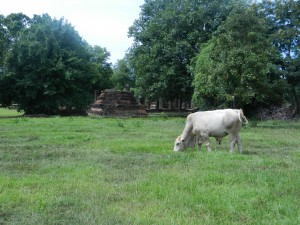
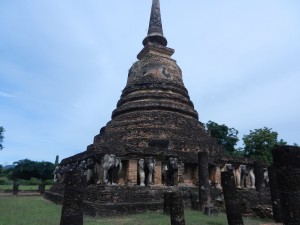
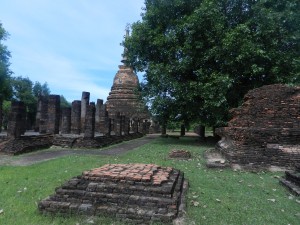
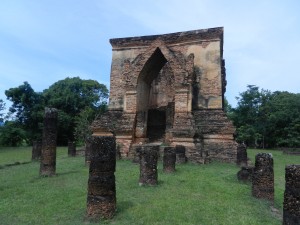
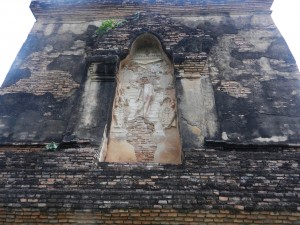
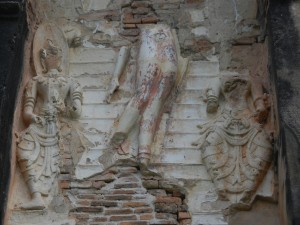
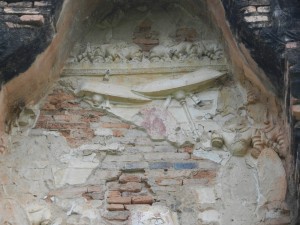
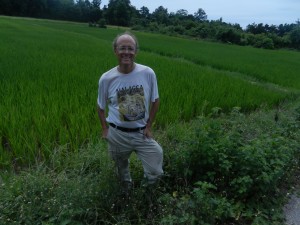
Comments on this entry are closed.